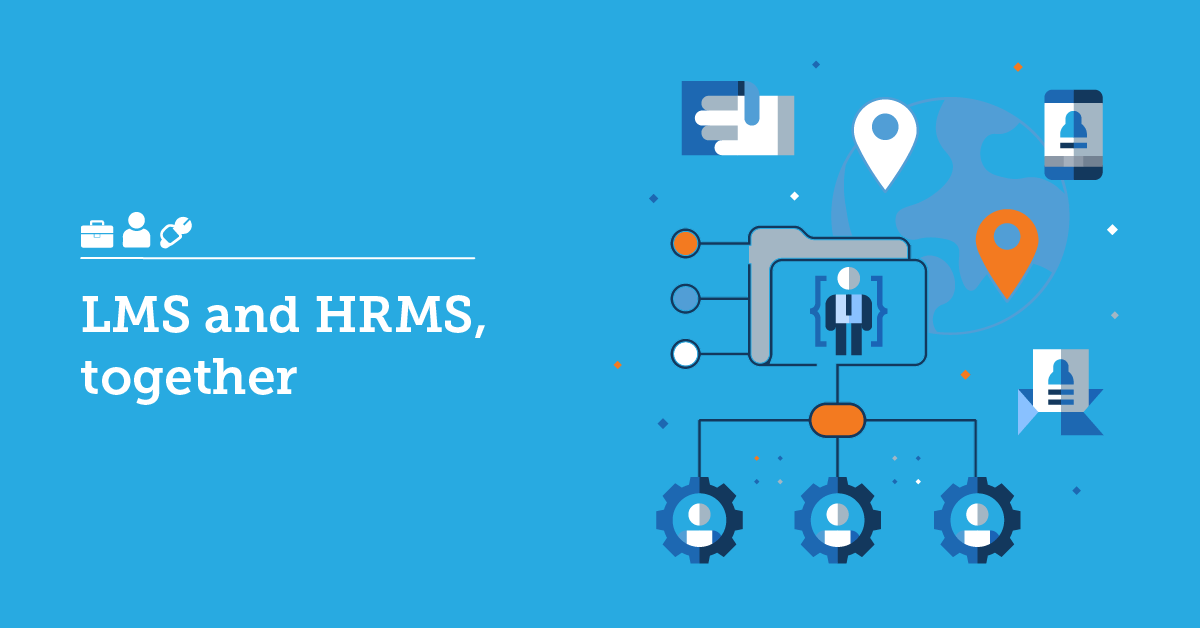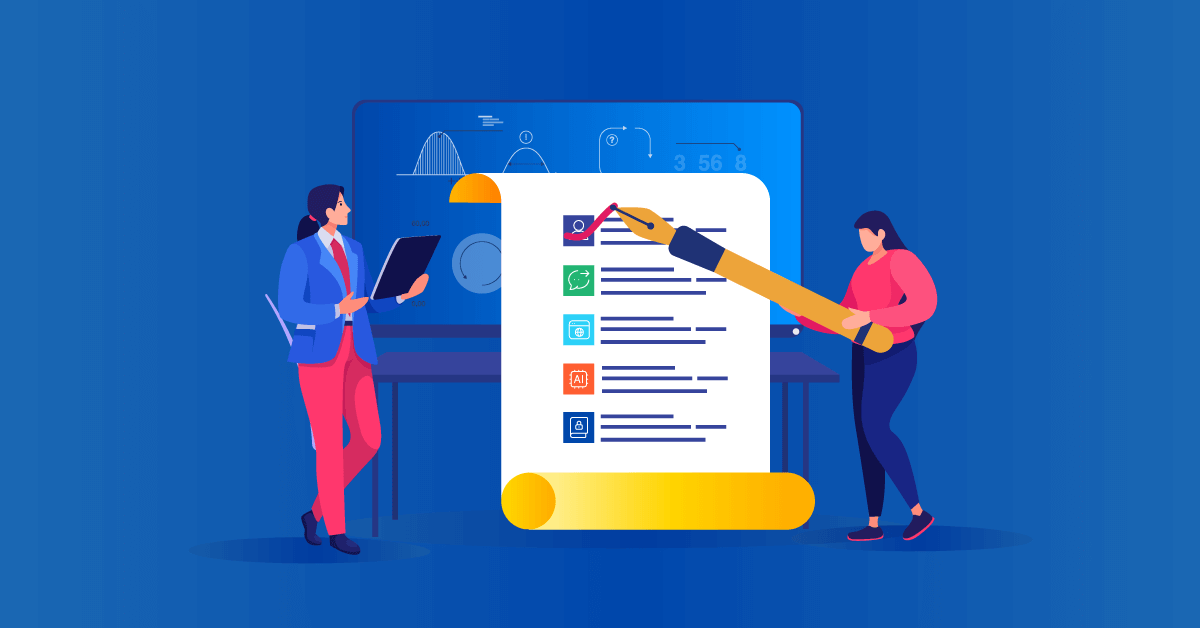Knowledge is not just power, it’s also success and growth (and pizza, according to Parks and Recreation). You believe that wholeheartedly. That’s why your company has implemented an LMS to take care of your employee training needs.
Thanks to your LMS, you are probably already seeing an increase to employee engagement and retention. And in the long run, you expect to also see an increase in your company’s growth. Properly trained employees = happy and engaged employees = continued success.
But wouldn’t it be great if you could have all these benefits sooner? If you could make sure that every new employee who joins your company is set up for success from the start?
It sure would.
And that’s exactly what an LMS integration with your HR system can help you achieve.
The benefits of an LMS – HR system integration
When you integrate your HR system’s functions with a software that also includes a learning portal and a centralized database, you get something called HRMS. The HRMS (Human Resources Management System) is like a Swiss Army knife for all your administrative and employee training needs.
Of course, there are many different HRMS software vendors and their specific offerings vary. But generally, with an HRMS, you can do anything from tracking applicants and recruiting to onboarding employees and giving them access to e-learning programs.
Here are the 4 main benefits of having an integrated HR system with an LMS component
You have everything in one place
Imagine the following scenario: You’ve decided to bake a cake. You know you have all the ingredients available, but they’re scattered around in your house instead of being neatly stored in your cupboard. The flour and cocoa are in tin boxes in the attic, the chocolate chips are in a bowl on your sofa table, the vanilla is nowhere to be found… In the end, you either waste valuable time looking for all your ingredients before even baking the cake, or you waste money buying them again.
That’s how it can feel sometimes, with your company’s employee data. You have your HR system data, maybe some separate Excel files for payroll, and you also have all the data from your LMS program. Wouldn’t it be so much easier and cost effective if all your data was in the same place? An LMS integration with your HR system will make sure there are no data redundancies — and will simplify system maintenance.
It’s not just a matter of good housekeeping, though. Think about your cake ingredients again: they can be used in multiple recipes, but you won’t know that unless you see them all together. In the same way, your data can be used to offer you a ton of different insights. Michael Schneider, Human Capital Specialist at Welltower makes a case for leveraging metrics during onboarding like productivity, engagement and manager satisfaction. Matt Betts, Director of Product Development at Strategic Management Decisions, goes as far as to say that onboarding data can even reveal the real reason an employee quits.
And on the LMS side of things, having all your data in one place means you can track everything. You’ll know how your employees are performing at all times.
Which brings us to our second point.
You can understand your talent better
Do you tend to see onboarding as something that stops at the HR gateway of the business, and the LMS as something that comes later on? You may be missing out on a whole lot of employee development that happens in between. This Gallup study has found that onboarding is a much longer journey than we think. It takes employees up to a year or more (depending on the industry) to reach their full potential.
An HRMS creates more opportunities to check in with your staff throughout their journey, in a seamless way. The combined power of an LMS and an HR system will help you not only identify your employees’ strong spots, but also understand them more holistically. And that’s very important when it comes to crossboarding.
Crossboarding is basically reskilling your employees, in order to prepare them for taking on a different role in your business. This means you can promote or move your talent around internally, cutting costs and increasing motivation across the board. This TalentLMS study identifies crossboarding as one of the rising onboarding trends of 2020.
Understanding your talent better leads to being more able to assign them new roles. An integrated, comprehensive HR system goes a long way towards that.

You can set the tone and expectations early
Onboarding may be a longer journey, but it should start with a quick step. You can start by giving your new employees immediate goals. Ideally, these goals will be a part of your training program; you can use them to see someone’s working style early on and offer feedback before any potential bad habits start forming. An LMS integration with your existing HR system will help you spot these things early on.
Speaking of early on: another rising onboarding trend for 2020 is preboarding. Preboarding helps you connect with your candidates even before they come in, and it’s a practice that’s becoming popular with best-in-class companies. Imagine if you could get new employees excited about your company and culture even before they walk through your door! That’s something you wouldn’t be able to do in a regular HR context. But it becomes possible in an integrated HRMS.
It’s simpler and more rewarding — for everyone
A great employee onboarding program can improve employee retention by 82% and company productivity by 70%. It makes sense if you think about it. A smoother onboarding process and a functioning platform that can provide them with answers, goes a long way towards employee satisfaction.
To briefly return to that cake analogy: having all the ingredients (aka data) in one place won’t just make things easier for you. It will make things easier for everyone else in your household who tries their hand in baking.
With an HRMS, your employees will only ever have to deal with one platform — and one set of username and password. They can access their training manuals and information faster and easier, instead of wondering where you’ve hidden the proverbial flour.
Next steps
The benefits of an LMS and an HRMS integration are hopefully clear by now. An HRMS system helps you simplify data housekeeping, connect to your talent better, set the tone right from the start and keep everyone happy. Which means that choosing the right HRMS is going to be a very important decision for your company. If you need help finding the right software for your needs, you can compare different HRMS vendors.
Still feeling a bit lost? To make things easier for you, TalentLMS has an integration with Bamboo HR that lets you sync employee data from one system to the other. Simplicity, achieved.
| Tags: LMS Integration



